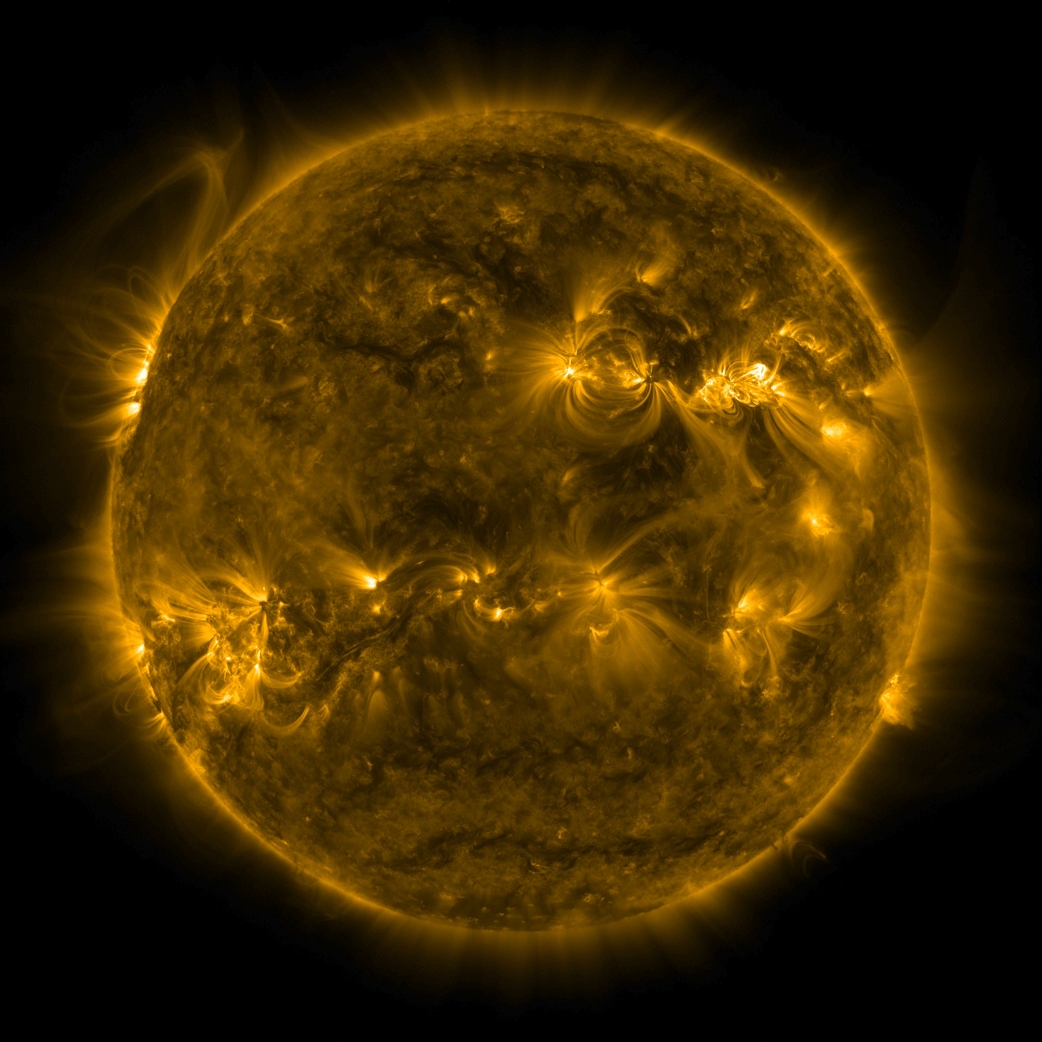Meet the Sun
The Sun is the star at the center of our solar system. It is a giant, spinning ball of very hot gas.
Energy is made by nuclear fusion at the center of the Sun. The energy travels to the Sun's surface, which takes millions of years because the Sun is so large. The Sun has an atmosphere above its surface. The outer part of the Sun's atmosphere is called the corona.
There's always something happening on the Sun.
Sometimes, the Sun has spots, called sunspots. They look dark compared to the rest of the Sun's surface. At a sunspot, the surface of the Sun is magnetic and a little less hot. Sunspots come and go over time. Scientists use telescopes to watch the Sun and track the number of sunspots.
After sunspots form, the Sun sometimes spews magnetized particles into space. If the particles come towards the Earth, they can disrupt how electricity gets to homes. They are a danger to satellites and astronauts in space. The particles from the Sun are destructive, but they are also beautiful, creating the aurora lights.
Remember! Never look directly at the Sun!

This image shows what the Sun's surface was like on March 30, 2022. The hottest areas are shown in bright yellow. Somewhat less hot areas of the Sun are in darker yellow colors. A solar flare bursts from the upper right, releasing energy into space.
NASA’s Solar Dynamics Observatory